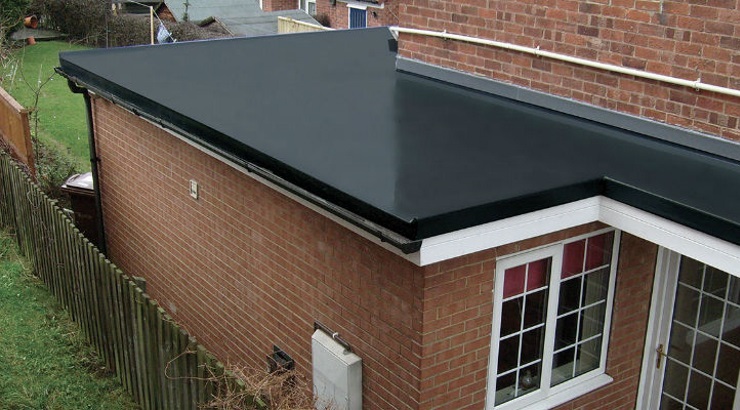Fixtures & Appliances
The ABCs of Rubberized Roofing
Everything to know about rubber EPDM roofing materials.

Rubber roofing is made of ethylene propylene diene monomer EPDM membranes, a roofing system composed of recycled rubber tires, slate, and sawdust.
EPDM rubber roofing is usually sold in rolls.
Roofing adhesive is used on flat roofs in varying thicknesses of 45mm to 90mm. The rolls are overlapped to form long sheets that create a home’s insulation and airtight seal.
The rubber roofing membranes have high resistance to UV, abrasion, and resistance against precarious corrosive materials such as acid, alkaline, and alcohol-based substances.
Unveiled in 1962, rubberized roofing remained unpopular until the early 1970s when builders warmed up to EPDM single-ply roofing membranes to beat the 1973 Middle East oil embargo that led to an escalation of asphalt roofing prices.
RELATED: How to Choose the Best Roofing for Your Home
EPDM roofing was then seen as an easy-to-install low-cost alternative to asphalt roofing. Over the years, numerous enhancements have been made to rubber roofing materials including double-sided seam tapes and customised primers.
What is rubber roofing made of?
Rubber roofing is made of recycled materials that include sawdust, slate dust, worn-down insulation, as well as recycled rubber elements from tyres.
The use of recycled materials helps to keep rubber roofing prices low.
Advantages of rubber roofing
1.) Cost-effective: Rubber roofs are much cheaper as compared to other types of roofing materials.
2.) Low maintenance: In times of unfortunate damage, rubber roofs are easy to fix, most of them requiring some liquid rubber or heavy-duty rubber adhesive tape.
3.) Durability: Built to ensure toughness against rough weather, rubber roofs can go along for 20 to 30 years in normal climates and even up to 40 years if the conditions are favorable.
RELATED: Clay Tile Roofing Materials
4.) Eco-friendly: Rubber roofs require only a very little amount of energy to produce and are very often a full one hundred percent recyclable.
5.) Fire resistant: These roofs are fire resistant and, in some countries, a homeowner gets discounts from insurers upon installing rubber roofs.
6.) Energy efficiency: Rubber roofs are good insulators – which helps to cut heating and cooling costs.
Disadvantages of rubber roofing
1.) Suitability: Additional decking is required to install over existing roofing. Also, the rubber roofs are not fit for large-scale residential applications.
2.) Aesthetic value: The roofs have a common black color that doesn’t contribute to the aesthetic appeal most house owners would look for in a house.
3.) Installation issues: Large rubber rolls are easy to install, but rubber shingles are tricky to fit; a roofing professional is needed to do so.
4.) Impairment: Rubberized roofing is highly subject to impairment by falling objects and by foot traffic.














